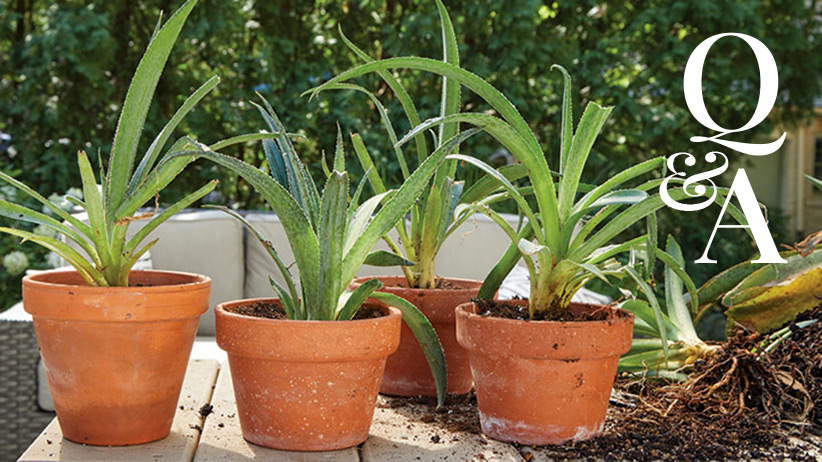Planting a tree
Trees add structure and shade to a garden and value to your home. But first they need to be planted. Here’s how to plant a tree in four easy steps!
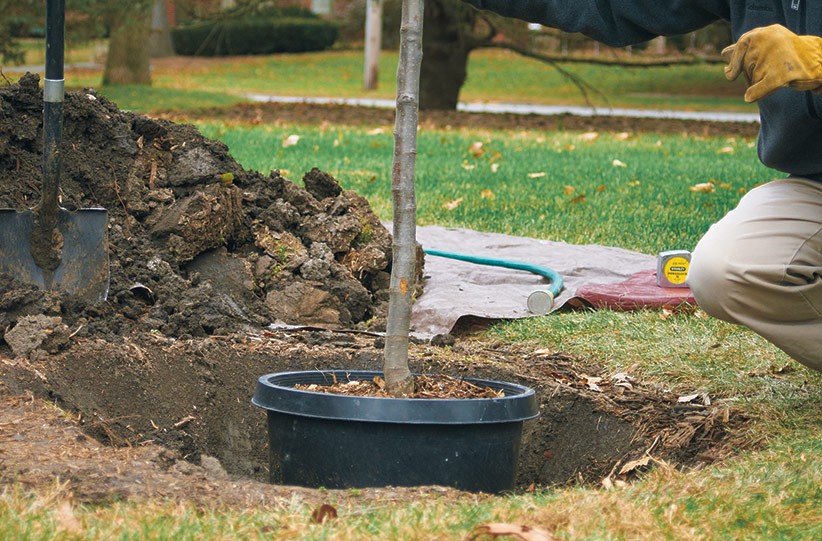
Step 1: Dig a hole for the tree
Dig a hole two to three times the width of the root ball. Test the depth of the hole by setting the tree in it. Don’t get it too deep — you want the soil line right where it is on the tree in the container. The one in the photo above is perfect.
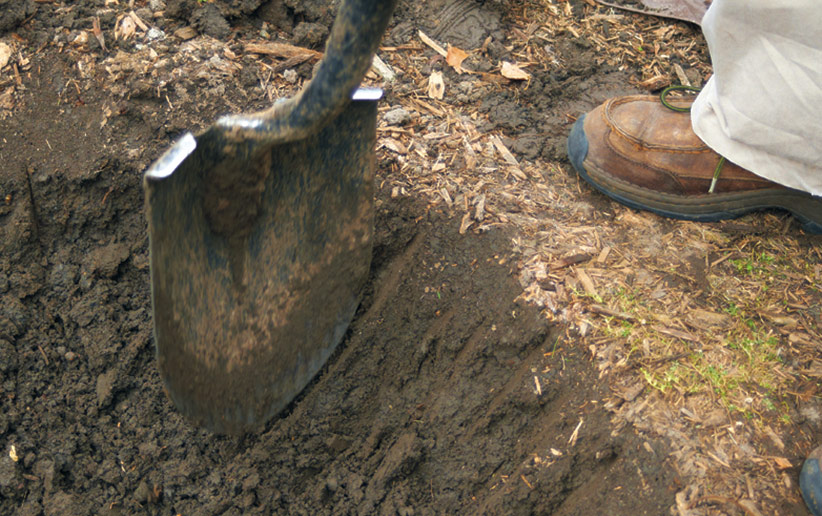
Rough up the sides of the planting hole
In the photo above, you’ll see how to rough up the sides of the hole. Slick, smooth sides make it difficult for the roots to reach out into the soil. Speaking of soil, even if your soil is poor, don’t try to amend it. It’s impossible to amend soil in a space big enough for a tree — it’s better to choose a tree that tolerates your soil just as it is.
You Might Also Like:
Never Follow this Pruning Advice
How to Stake a Tree
Colorful Planting Around a Tree
Must-Have Pruning Tools for Gardeners
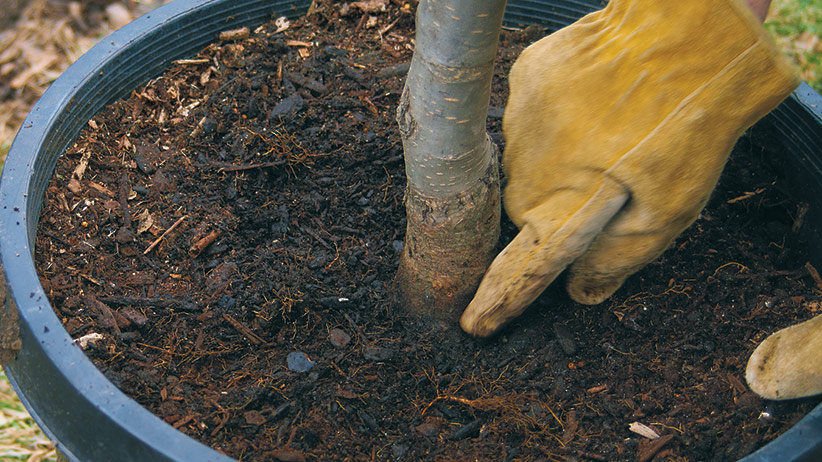
Pay attention to the root collar
Brush away mulch from the top surface of the root ball to see the root collar, where the roots meet the trunk. When you plant, the root collar should be at or just above the soil line. (In poorly drained soil, plant it an inch or two higher.)
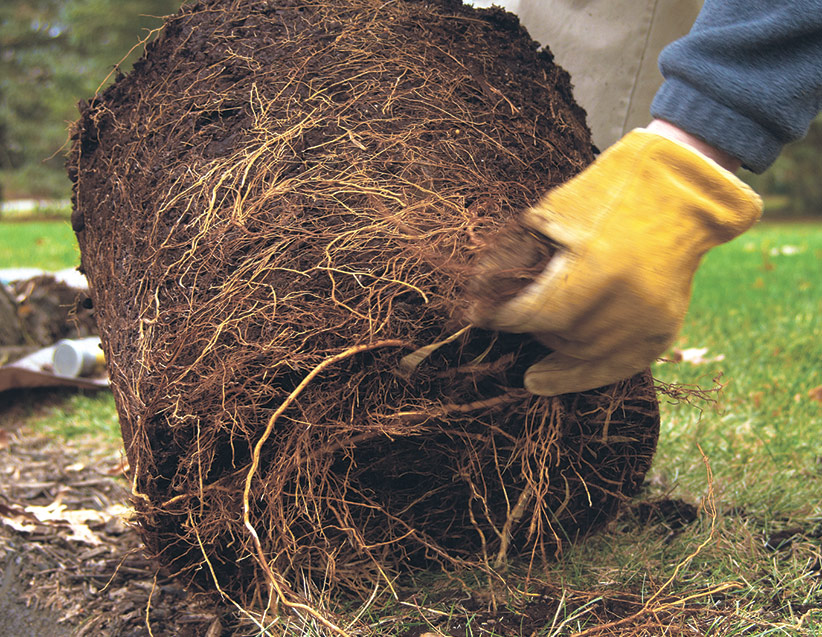
Step 2: Detangle the tree roots
In general, you want to disturb the roots as little as possible. But if you take the tree out of its container and the roots are potbound and circling as in the photo above, loosen and tease them out with your hands. This will stop them from circling and help them to grow out into the surrounding soil. Prune off any damaged roots at this time, too.

Step 3: Backfill & water
Set the tree into the hole, making sure the root collar is at the correct level. Backfill the hole halfway with the original soil, then fill the hole with water as the photo above shows. Wait for the water to soak into the soil and then finish filling in the hole with soil.

Firm the soil around the trunk and water again to remove air pockets. Don’t fertilize the tree yet. Just let it settle in. Wait until spring, and then feed lightly, but stay away from chemical fertilizers with a lot of nitrogen (the first number in the analysis). This stimulates foliage growth and you want your new tree to put its energy into root growth.
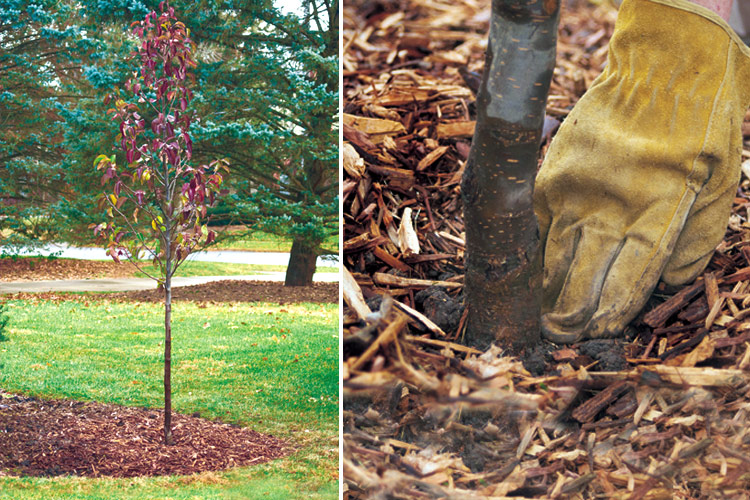
Step 4: Add mulch to your newly planted tree
Once the tree’s in the ground, top the soil with a 2- to 4-in. layer of organic mulch, such as wood, compost or shredded leaves, as you can see in the photo above. Organic mulches hold soil moisture and improve the soil as they break down. Don’t let mulch touch the trunk, as it holds moisture against the trunk and damages the bark. Avoid stone mulch. It can heat up the soil and “cook” the roots or stimulate the tree to grow during its dormant season.
Growing tips
- Remove broken branches, but otherwise give the tree a year or two before you do any pruning, as it needs as many leaves as possible to manufacture food.
- Use tree wraps only on young trees during the winter to protect tender bark from cold damage. They can harbor insects if left on during the growing season.
You Might Also Like:
Helpful Gardening Videos
How to Plant Perennials in Four Easy Steps
7 Ways to Use Conifers in the Garden
How to Use Fertilizer in the Garden














